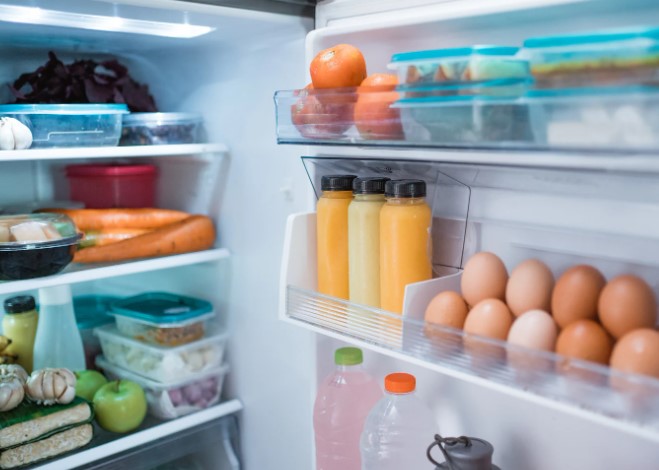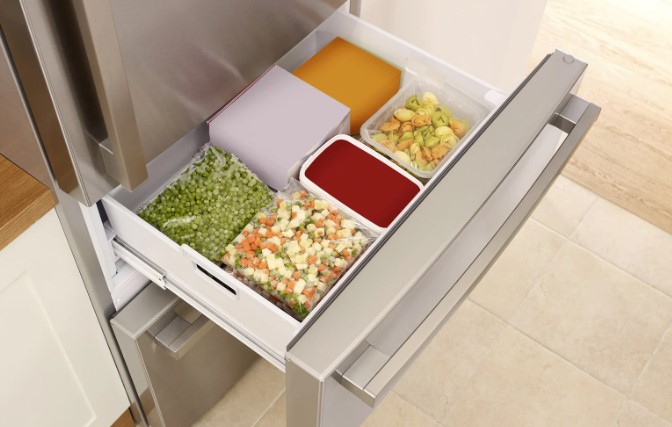- Why Fridge Settings Matter More Than You Think?
- What Is the Coldest Setting on a Fridge 1-7?
- Fridge Settings 1-7 Explained
- How to Adjust Your Fridge for Best Performance?
- Common Mistakes to Avoid When Setting Your Fridge
- Comparison Table: Fridge Dial Settings and Estimated Temperatures
- Conclusion: Choosing the Right Setting for Freshness and Safety
- FAQs: Coldest Fridge Settings and Best Practices
When I first tried adjusting my fridge, I was surprised by how unclear the temperature dial was. Most fridges don’t show the actual temperature, just a dial marked from 1 to 7.
So I did some digging to answer the question: what is the coldest setting on a fridge 1-7?
Let me walk you through everything I’ve learned, from fridge dial logic to food safety and season-based settings.
Why Fridge Settings Matter More Than You Think?
How Incorrect Settings Can Lead to Food Spoilage?
I used to assume any cool setting was fine — until my milk started going off too quickly. It turns out that an incorrect fridge setting can lead to:
- Faster bacterial growth
- Shortened shelf life of fresh food
- Higher energy consumption
For me, setting the right fridge temperature meant fewer trips to the shop and less food waste.
The Ideal Fridge Temperature in the UK
According to the UK’s Food Standards Agency, a fridge should stay at or below 5°C.
The sweet spot most experts recommend is between 3°C and 5°C. Anything warmer, and there’s a risk of unsafe food storage.

What Is the Coldest Setting on a Fridge 1-7?
If your fridge has a dial from 1 to 7, it might be very confusing for you.
The numbers don’t represent temperature in degrees — they represent cooling power.
Is 1 or 7 the Coldest?
The answer is simple:
7 is the coldest setting
1 is the warmest setting
Turning the dial towards 7 increases the fridge’s cooling power. I use this during hot months or when my fridge is packed with food.
How the Fridge Dial Works?
Fridge dials typically adjust how long the compressor stays on:
- Lower numbers keep it on for a shorter time, making the fridge warmer.
- Higher numbers keep it on longer, making the fridge colder.
That’s how I realised why my lettuce was freezing — I had cranked it to 7 when I didn’t need to.
Fridge Settings 1-7 Explained
What Each Number Typically Means?
Here’s how I interpret the fridge dial:
- 1 – Warmest (approx. 7–8°C)
- 2 – Mildly cool (approx. 6°C)
- 3 – Acceptable (approx. 5°C)
- 4 – Ideal for most usage (approx. 4°C)
- 5 – Cold (approx. 3°C)
- 6 – Very cold (approx. 2°C)
- 7 – Coldest (approx. 1°C or lower)

Which Setting to Use During Summer and Winter?
I adjust based on the season:
- Summer: I set the dial around 5 or 6 to fight higher room temps.
- Winter: I use 3 or 4 to avoid overcooling or freezing certain foods.
How to Adjust Your Fridge for Best Performance?
Step-by-Step Guide to Adjusting the Dial
This is what I usually do with the setting of the fridge:
- Turn the dial to 4 as this is a safe initial point.
- Make a place for the fridge thermometer on the middle shelf.
- Wait 24 hours and check the temperature.
- Adjust up or down depending on results.
How to Check the Actual Temperature Inside the Fridge?
Don’t rely on guesswork. I always keep a small fridge thermometer inside, placed in the middle (not the door).
It gives an accurate reading to make sure I’m always between 0°C and 5°C.

Common Mistakes to Avoid When Setting Your Fridge
Assuming Midpoint Is Always Right
I used to think setting the dial to 4 (the middle) was perfect year-round.
But in summer, this wasn’t enough. I’ve learned to adjust it according to ambient temperature and how full the fridge is.
Ignoring Room Temperature and Fridge Load
External factors make a big difference.
A hot kitchen or a stuffed fridge needs a colder setting, while an empty fridge in winter needs a gentler one to avoid freezing.
Comparison Table: Fridge Dial Settings and Estimated Temperatures
| Fridge Dial Setting | Estimated Temperature (°C) | When to Use |
| 1 | 7–8°C | Too warm – not safe for food storage |
| 2 | 6°C | Better, but still risky |
| 3 | 5°C | Acceptable in cooler months |
| 4 | 4°C | Ideal year-round baseline |
| 5 | 3°C | Good during summer |
| 6 | 2°C | Use when fridge is very full or room is hot |
| 7 | 1°C or lower | Coldest – risk of freezing some items |
Conclusion: Choosing the Right Setting for Freshness and Safety
So, what is the coldest setting on a fridge 1-7? It’s 7 — yet the coldest is not always best.
I now keep mine around 4 or 5, depending on the season and how much food I’ve stored.
Remember:
- Always check the actual temperature with a thermometer.
- Adjust seasonally and don’t overload the fridge.
- A bit of fine-tuning can go a long way in keeping your food safe and fresh.
Related Article: How to Reset Beko Fridge Freezer?
FAQs: Coldest Fridge Settings and Best Practices
1. Should I leave my fridge on setting 7 all the time?
No, setting 7 is the coldest, but it can freeze some foods. I only use it during heatwaves or if the fridge is packed.
2. Is it safe to store meat in a fridge set to 3 or 4?
Yes, if the internal temperature stays below 5°C. I always use a thermometer to confirm this.
3. Why is my food freezing even though my fridge is on setting 4?
It could be due to poor air circulation or the placement of items near the cooling vent. Try moving items and rechecking the temperature.


0 Comments